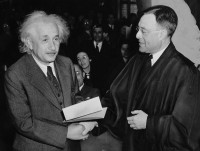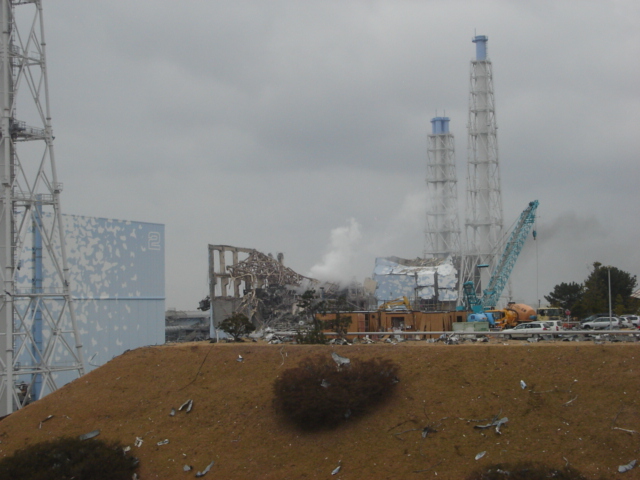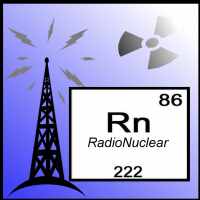Women’s History Month Highlights German Chemist Dr. Ida Noddack

Dr. Ida Noddack (1896-1978) was a German Chemist most well-known for her co-discovery of rhenium and challenging Enrico Fermi's theory on element 93.
The ANS Nuclear Cafe is a blog owned and edited by the American Nuclear Society. Information contained on the ANS Nuclear Cafe has been provided by numerous sources. Therefore, the American Nuclear Society assumes no responsibility or liability for the accuracy of information contained herein. DISCLAIMER: The views expressed in posted articles do not necessarily reflect the views of the American Nuclear Society. The views expressed here are those of the individual authors. ANS takes no ownership of their views. The American Nuclear Society assumes no responsibility or liability for any use or operation of any methods, products, instructions, or ideas contained on this site.

A message from Chapman Nuclear
New Lattice Confinement Fusion Power Reactors May Eliminate 95% of SNF

Dr. Ida Noddack (1896-1978) was a German Chemist most well-known for her co-discovery of rhenium and challenging Enrico Fermi's theory on element 93.
Any ANS national member, who is a U.S. citizen, with an M.S. or equivalent experience in nuclear engineering, nuclear science, or a related field, can apply for the Glenn T. Seaborg Congressional Science and Engineering Fellowship. The Seaborg Fellow serves as a staff member in the Congressional office of his or her choice, providing scientific advice to the member of Congress and his or her staff. The 12 months of service starts on January 1 and ends on December 31.
We continue this look at original materials covering America's second commercial High Temperature Gas-cooled Reactor (HTGR) with the examination of components of the NSSS, or Nuclear Steam Supply System.

Dr. Rosalyn Sussman Yalow
Rosalyn Sussman Yalow was a medical physicist and won the 1977 Nobel Prize in Physiology or Medicine along with her partner Solomon Berson for the development of radioimmunoassay (RIA).
For most working in the field of nuclear energy, the American Nuclear Society conferences are frequently attended to learn about the latest innovations, present their newest research, and spark new hypotheses. But the best ideas aren't always found in the lecture halls. In the case of the latest collaboration between Idaho National Laboratory (INL) and Oregon State University, lunchtime was the breeding ground for innovation.
 In February of 1950, a devoted follower of Albert Einstein wrote him a letter prompted by the death of his son. He questioned Einstein's belief that physical death cannot be transcended. His grief could only be overcome if Einstein were to endorse a theory wherein his love for his son would render the latter immortal [1]. Einstein wrote back to the grief-stricken father, grimly but pragmatically choosing to focus on nursing his mental health back to a more peaceful state, than on any theories about his son's death.
In February of 1950, a devoted follower of Albert Einstein wrote him a letter prompted by the death of his son. He questioned Einstein's belief that physical death cannot be transcended. His grief could only be overcome if Einstein were to endorse a theory wherein his love for his son would render the latter immortal [1]. Einstein wrote back to the grief-stricken father, grimly but pragmatically choosing to focus on nursing his mental health back to a more peaceful state, than on any theories about his son's death.
By Don Eggett and Mimi Holland Limbach - PBNC 2018 meeting co-chairs
 By Will Davis
By Will Davis
 Happy Women's History Month! Each week during the month of March, one woman from the history of nuclear science and technology will be featured on the ANS Nuclear Cafe.
Happy Women's History Month! Each week during the month of March, one woman from the history of nuclear science and technology will be featured on the ANS Nuclear Cafe.
 There's been a ton of news since RadioNuclear.org's newest episode! ANS Social Media Team member and program host Doug Hardtmayer picked out three that had a lot to unpack, so enjoy his extended news segment! The first item he discusses is the new MOU signed between the Ukraine and Holtec to build multiple SMR-160's in the Ukraine by 2026. Doug also discusses Mark Z. Jacobson's decision to drop the lawsuit against PNAS and Christopher Clack, and speculate some of the reasons he may have dropped the case. Lastly, Doug tackles a new Greenpeace study from Fukushima that will surely make its rounds in the anti-nuclear community, and discuss some questionable findings from this study. Doug's is joined this week by two senior-level board members from First Energy, owner of the Davis-Bessie and Perry Nuclear Power Plants, Ohio's nuclear future!
There's been a ton of news since RadioNuclear.org's newest episode! ANS Social Media Team member and program host Doug Hardtmayer picked out three that had a lot to unpack, so enjoy his extended news segment! The first item he discusses is the new MOU signed between the Ukraine and Holtec to build multiple SMR-160's in the Ukraine by 2026. Doug also discusses Mark Z. Jacobson's decision to drop the lawsuit against PNAS and Christopher Clack, and speculate some of the reasons he may have dropped the case. Lastly, Doug tackles a new Greenpeace study from Fukushima that will surely make its rounds in the anti-nuclear community, and discuss some questionable findings from this study. Doug's is joined this week by two senior-level board members from First Energy, owner of the Davis-Bessie and Perry Nuclear Power Plants, Ohio's nuclear future!
One of the important design goals for the Fort St. Vrain reactor - really, the second-generation high temperature gas cooled reactor - was to create a core design that would be more compact than that actually used at Peach Bottom. An innovative design was developed using stacked reactor-grade graphite modular blocks which incorporated fuel rods that contained coated fuel particles.
College graduates, as with most industries, are the future of nuclear engineering. How university programs are structured, the professors' involvement in the field, and the opportunities available at the undergraduate and graduate-level are fundamental to the continued growth of nuclear engineering.
This week's Friday Matinee is a three-part presentation delivered originally on January 18, 2018, by the U.S. Department of Energy as a livestream. The session was entitled "Energy Talks: Advanced Research, Nuclear Energy, Water Power."
Did you know that National Engineers Week (NEW) is starting Sunday, February 18? So, it's time to celebrate the engineering profession and help others discover engineering!
The Fort St. Vrain project was innovative in more than one respect, and while it did not blaze the trail in HTGR (High Temperature Gas-cooled Reactor) commercialization - a feat accomplished by the Peach Bottom Atomic Power Station - it did considerably advance the technology toward full commercial operation and duplication on a wide scale through some significant design changes. One of the most interesting of these was the use of a prestressed concrete reactor vessel (PCRV) for the reactor itself and primary components instead of a steel vessel.
An old hand at startups by age 31, Bret Kugelmass is not one to do things by halves. He believes climate change poses a mortal threat to humanity, and that the widespread adoption of nuclear energy is the only way to stem the tide of catastrophe.
https://www.youtube.com/watch?v=6fJK079Qtgg

What became the Fort St. Vrain Nuclear Generating Station began as a study almost two decades before the plant was completed and led to years of effort to construct a commercial high-temperature gas-cooled nuclear power plant. While the effort did not ultimately lead to a successfully competitive alternative to light water designs, it did add considerably to the knowledge and experience base of gas-cooled reactors specifically and nuclear power generally. We will chronicle the effort in images - mostly using those from an incredible press package in the author's collection. (Photos will enlarge when clicked.)
Courtesy of the U.S. Department of Energy Office of Nuclear Energy
Testimony Before the New Jersey Senate Environment and Energy Committee and the Assembly Telecommunications and Utilities Committee